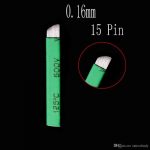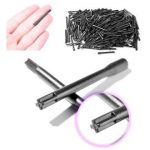Think Twice: The Surprising Side of Microblading You Need to Know:- Microblading Complications: A Comprehensive Guide

Understanding Microblading
Microblading has revolutionized the beauty industry, offering a semi-permanent solution for fuller, perfectly-shaped brows. This manual method involves the use of fine needles to deposit pigment into the skin, creating the illusion of natural hair strokes. But, like any procedure, it is essential to understand the potential complications and how to mitigate them.
Microblading Complications and Their Causes
-
- Infection: The most alarming complication is an infection. If the tools aren’t sterilized properly, or if the aftercare is not followed correctly, there’s a risk of bacterial contamination.
-
- Scarring: If the microblading artist goes too deep or if the skin doesn’t heal properly, there’s potential for scarring. The presence of keloids or hypertrophic scars can be a concern for individuals with a predisposition to them.
-
- Unwanted Pigment Results: Sometimes, the color may not set as expected. It might fade too quickly, turn an unwanted shade, or appear too dark.
-
- Allergic Reactions: Rarely, some individuals might be allergic to the pigments used in microblading. This can lead to redness, itching, and discomfort.
Preventing Microblading Complications
Choosing a Certified Technician: Always opt for a certified and experienced technician. They will be aware of the right depth, technique, and will use sterilized equipment. Their expertise will significantly reduce the risk of complications.
Conduct a Patch Test: Before diving into the full procedure, ask your technician to perform a patch test. This can help in identifying any allergic reactions beforehand.
Follow Aftercare Instructions Religiously: After the procedure, you’ll be provided with specific aftercare instructions. Adherence to these can prevent infections and ensure the longevity of the pigment.
Know Your Skin: If you have sensitive skin or conditions like eczema, it’s crucial to discuss this with your technician. They can guide you accordingly and tailor the procedure to suit your needs.
Correcting Complications
Immediate Removal: If you’re unhappy with the results right after the procedure, you can use some techniques to lighten or remove the pigment, even though many recommend waiting for it to fade naturally.
Use of Pigment Lightening Solutions: If the pigment turns out too dark or settles into an unwanted shade, you can apply specific solutions to lighten it.
Medical Treatments: For complications like infections or allergic reactions, it’s crucial to consult a dermatologist or a medical professional immediately. They can prescribe topical treatments or other necessary interventions.
Revision Microblading and Microblading complications:”If the initial results firstly aren’t to your liking, it’s then possible to undergo revision microblading after a specific waiting period. Subsequently, this allows the technician to correct any irregularities or adjust the pigment.”
Understanding Microblading Complications and Setting Expectations
While microblading offers fantastic results for many, it’s not a one-size-fits-all solution. Your skin type, lifestyle, and even genetics play a role in how the pigment settles and lasts. It’s essential to have a thorough consultation before the procedure to set realistic expectations. Moreover, it’s crucial to understand that microblading, while semi-permanent, is not a one-time procedure. Touch-ups are required to maintain the desired look. It’s a commitment, and understanding the potential complications is part and parcel of this commitment.
In Conclusion:
“Microblading is, undoubtedly, a transformative procedure that can offer the brows of your dreams. Nevertheless, like any treatment, it’s essential to be well-informed about potential complications. Furthermore, with the right technician and proper aftercare, these complications can be minimized. Thus, ensuring you enjoy the benefits of this beauty enhancement for a long time.”



